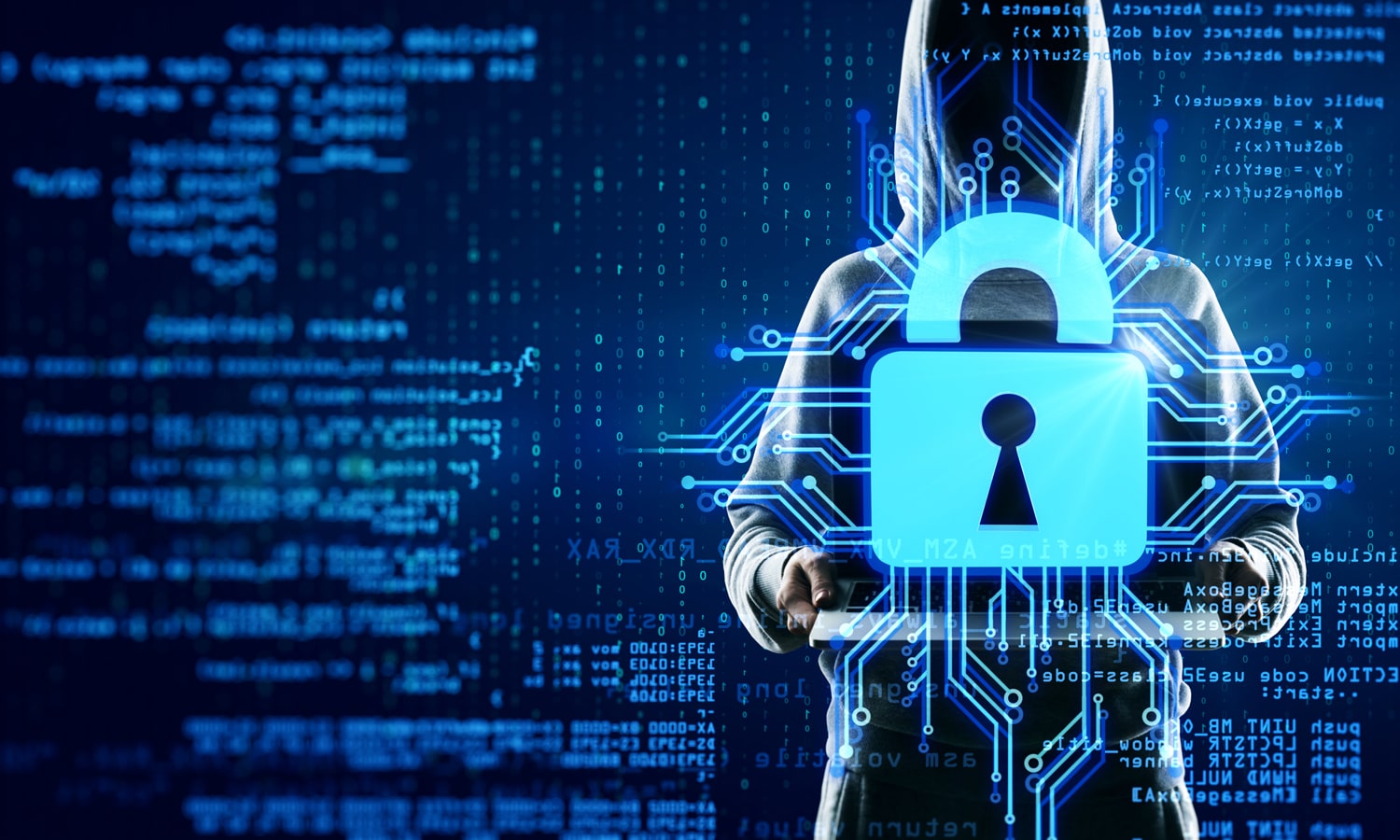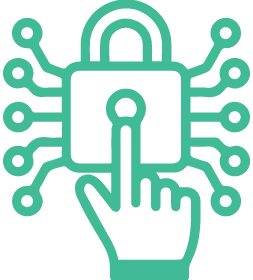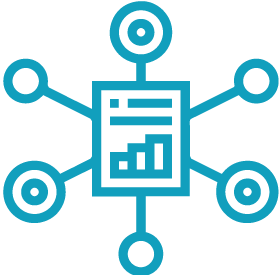The rapid march of businesses towards digitization, increased connectivity, and the migration to cloud services have not only brought efficiency and agility but also the omnipresent threat of cyberattacks. Today, the problem of hacking extends beyond just data breaches; it can erode trust with customers and even place organizations in legal jeopardy. With the proliferation of technology, from self-driving cars to IoT-enabled home security systems, the stakes in the battle against cybercrime are higher than ever.
Cybersecurity has emerged as a paramount concern for individuals, organizations, and governments. Geopolitical instability further amplifies the risk of catastrophic cyberattacks, as indicated by the Global Cybersecurity Outlook 2023 report. Around 93% of cybersecurity experts and 86% of business leaders anticipate the likelihood of a catastrophic cyber event unfolding within the next two years, signifying a substantial menace to societies and crucial infrastructure.
The Russian-Ukraine conflict demonstrated that enterprise security and risk cannot be managed in isolation, making risk-based decision-making an essential element for business resilience. The fallout of the conflict led to coordinated cyberattacks impacting organizations both in these countries and worldwide, serving as a stark reminder that hybrid warfare is a new reality where geopolitics and cybersecurity are inextricably linked. Hence, it is imperative to view the worldwide threat landscape from a business-oriented perspective. In this environment, every business choice carries security implications, and simultaneously, security concerns shape various facets of the business.

Understanding Cybersecurity
Cybersecurity is a subset of information security that protects computers, networks, software, and data from unauthorized access. It focuses on confidentiality, integrity, and availability, which are crucial in safeguarding personal and company data. In cybersecurity, the primary objectives are to keep data confidential, ensure its integrity, and maintain its availability for authorized users. With hackers employing advanced technology and sophisticated strategies to breach security measures, the role of cybersecurity professionals has never been more critical.
Why Cybersecurity Is Essential
With the security of supply chains gaining prominence, a “secure by design” approach is crucial, particularly in the context of cloud technology and artificial intelligence’s growing influence. With the ascent of artificial intelligence (AI) as a novel catalyst for organizational growth, the incidents of AI-targeted attacks are on the rise. These threats often center around data protection, integrity, and algorithm manipulation.
A comprehensive cybersecurity approach customized for your unique business not only ensures resilience in the face of evolving challenges but also enables seamless scalability to address a multitude of scenarios and adapt to forthcoming impacts.
An Accenture study underscores the importance of cybersecurity with business objectives, as organizations that closely link cybersecurity programs to their business goals are 18% more likely to drive revenue growth, expand market share, and enhance customer trust and employee productivity.
Cybersecurity is essential today due to several critical reasons that underscore its fundamental importance in our interconnected world:

• Escalating Cybercrimes: The frequency and diversity of cybercrimes are on the rise. The digital realm is rife with threats, from malware and ransomware to phishing and social engineering. Malware, phishing, and DDoS attacks pose significant threats, jeopardizing corporate entities and the private data of individuals. Hackers are continually devising new methods, from crypto-jacking to proxy phishing, password attacks, and malware.
• Data’s Inherent Value: The cornerstone of cybersecurity is safeguarding sensitive information. From personal identities to corporate trade secrets, data breaches can result in dire consequences. A strong cybersecurity framework ensures data confidentiality, integrity, and availability. Cyberattacks target valuable data, including sensitive financial information and personal details. Theft of such data can lead to identity theft and financial ruin. For instance, stealing someone’s Social Security number can make it easy for cybercriminals to take out credit cards in their name and accumulate debt.
• Economic Consequences: Cybercrimes result in substantial economic costs, with projected expenses reaching $8 trillion by 2023 and estimated growth to $10.5 trillion by 2025. Ransomware attacks can devastate organizations, disrupt financial markets, and impact individuals’ economic well-being.
• Real-World Threats: Cyberattacks are not confined to information breaches; they can compromise infrastructure, threatening public health and safety. Modern societies rely heavily on technology for critical infrastructure, and cyberattacks can disrupt essential services, causing real-world harm.
• Ensuring Business Continuity: For businesses, cybersecurity is pivotal in maintaining uninterrupted operations. A successful cyber-attack can disrupt services, halt production lines, and erode customer trust. By implementing robust cybersecurity protocols, companies can ensure business continuity, even in the face of adversity.
• Upholding Customer Trust: Customers entrust their personal data to organizations, be it for online purchases or service subscriptions. A security breach not only compromises this trust but also exposes individuals to identity theft and financial loss. By prioritizing cybersecurity, companies demonstrate their commitment to customer safety and privacy.
• Navigating Legal and Regulatory Landscapes: As cyber threats proliferate, governments worldwide are enacting stringent regulations to protect citizens’ data. Non-compliance can lead to hefty fines and reputational damage. A solid cybersecurity strategy ensures adherence to legal and regulatory requirements.
• Fostering Innovation: Cybersecurity isn’t just about defense; it’s also a catalyst for innovation. When businesses invest in cybersecurity, they create a secure foundation for exploring new technologies and business models without fear of jeopardizing their operations or customer trust.
Let us take you through some of the common cybersecurity threats that organizations face in today’s interconnected digital landscape:
Malware
Malware, an amalgamation of malicious software, encompasses a spectrum of pernicious elements, such as backdoors, remote access trojans, information stealers (including banking trojans), spyware, ransomware, downloaders, viruses, and worms. Cybercriminals employ a variety of infection vectors to activate malware, penetrating networks, and tempting users to click on dangerous links or attachments. Once inside, malware can:
- Install additional harmful software or tools.
- Covertly collect data, transmitting it from hard drives and applications (spyware, banking trojans, backdoors, remote access trojans).
- Lateral movement through the network, disseminating itself or other malware.
- Block access to critical network components.
- Disrupt elements, damaging files, and rendering systems inoperable (ransomware).
Ransomware
Ransomware gains unauthorized access to computers through initial infection vectors or other malware, interrupting services and processes to initiate encryption procedures. It encrypts files using a key solely controlled by the attacker, requiring a ransom, frequently in digital currencies such as bitcoin, for the files’ decryption and access restoration. The true risk of ransomware lies in the disruption it causes to businesses, potentially leading to service outages, reputation damage, and the removal of critical processes. Ransomware-as-a-service (RaaS) allows less-skilled malicious actors to utilize this tactic, offering substantial rewards for minimal effort or technical expertise.
Spyware
Spyware and banking trojans represent information-stealing malicious software designed to infiltrate target computers, steal data, and transmit it to third parties without consent. While banking trojans concentrate on gathering financial account information, spyware, which can also refer to legitimate monitoring software, is malicious when employed to profit from stolen data. The actions of spyware typically involve:
- Infiltration through app installation packages, malicious websites, or file attachments.
- Monitoring and capturing data through keystrokes, screen captures, and tracking codes.
- Transmission of stolen data to a command-and-control server, which cybercriminals use directly or sell to other parties.
Let’s delve into the diverse facets of cybersecurity that are pivotal in securing our digital domains.
Critical Infrastructure Security: Safeguarding the Backbone of a Nation
Critical infrastructure security is the vanguard that defends systems, networks, and assets vital for a nation’s security, economy, and public welfare. This domain protects critical components, including hospitals, electricity grids, and traffic lights, which, if compromised, could have far-reaching consequences on society.
Application Security: Fortifying the Digital Fortress
Application security encompasses the practices, features, and tools organizations employ to fend off cyberattacks and data breaches. It involves implementing antivirus programs, firewalls, and encryption to prevent unauthorized access to software and sensitive data.
Network Security: The Digital Perimeter’s Protector
Network security stands guard against unauthorized intrusions into internal networks. It prevents external threats from infiltrating and disrupting an organization’s infrastructure. Defense mechanisms range from robust login procedures to enhanced password policies and vigilant internet access monitoring.
Cloud Security: Shielding the Virtual Sky
Cloud security serves as a safeguard for cloud platforms, services, and data, shielding them from unauthorized access and potential disruptions. It deploys access management, network security, and secure cloud configurations, incorporating encryption and disaster recovery as essential protective measures.
Internet of Things (IoT) Security: Safeguarding a Connected World
The proliferation of the Internet of Things (IoT) introduces new opportunities, growth prospects, and vulnerabilities. IoT security requires innovative strategies to protect enterprises and customers against attackers and data abuses. The myriad of connected devices, appliances, and machines pose unique challenges, making robust security essential.
Developing an effective cybersecurity strategy for your business is a critical endeavor in today’s digital landscape. To guide you through this process, here are the essential steps to follow:
Here’s how to Build a Cybersecurity Strategy

Gain Insight into Your Cyber Threat Environment
This includes identifying the types of cyber threats that your organization faces, both today and in the future. You can do this by reviewing your organization’s security logs, conducting a risk assessment, and staying up to date on the latest cybersecurity trends.

Evaluate Your Cybersecurity Preparedness
This involves evaluating your organization’s current cybersecurity posture, including your policies, procedures, technologies, and staff training. You can use a cybersecurity framework, such as the NIST Cybersecurity Framework, to help you with this assessment.

Establish a Path to Enhance Your Cybersecurity Framework
This involves evaluating your organization’s current cybersecurity posture, including your policies, procedures, technologies, and staff training. You can use a cybersecurity framework, such as the NIST Cybersecurity Framework, to help you with this assessment.

Create a Cybersecurity Strategy
Once you have a plan for improving your cybersecurity program, you need to document it. This document should include your organization’s risk assessment, security policies and procedures, and security implementation plan.

Monitor and reassess your security strategy
Cybersecurity is an ongoing process, so it is important to regularly monitor your organization’s security posture and reassess your cybersecurity strategy. This will help you to ensure that your strategy is still effective in protecting your organization from the latest cyber threats.
Secure Your Business with Cybersecurity Strategies for a Safer Future
With the evolving nature of cyber threats, understanding and prioritizing cybersecurity is no longer an option but a necessity for organizations and governments to thrive and grow in an increasingly digital and connected world. Cybersecurity measures act as a shield against these threats, thwarting malicious attempts and safeguarding systems from compromise. In a world where transformation and speed are paramount, some organizations leverage cybersecurity as a differentiator, achieving better business outcomes. Integrating security into the very fabric of a business ecosystem offers scalability, agility, and confidence when facing future uncertainties.
In these turbulent times, where cyber threats loom large, organizations require innovative approaches to cybersecurity. Nsight offers support in solving complex problems and implementing fresh and diverse solutions. Our team works with clients to streamline security measures, making them user-friendly and future-proof. Our experts aim to protect not just against the threats of today but to secure the path forward as our clients grow and evolve.
Frequently Asked Questions (FAQs)
Cybersecurity plays a critical role in safeguarding digital identities. Without robust cybersecurity measures, digital identities are vulnerable to theft and misuse, putting individuals at risk of identity theft, fraud, and privacy breaches.
Managed security services are outsourced cybersecurity solutions provided by third-party experts. These cybersecurity services include continuous monitoring, threat detection, incident response, and security management. Organizations use managed security services to enhance their security posture and protect against cyber threats while benefiting from the expertise of security professionals.
In cybersecurity, threat intelligence refers to the collection and analysis of information related to potential cyber threats and vulnerabilities. It helps organizations understand and anticipate threats, allowing them to proactively strengthen their security measures, detect threats in real-time, and respond effectively to cyberattacks.
Operational technology security concentrates on safeguarding the computer systems, networks, and devices that control and manage industrial processes and critical infrastructure. It aims to protect these systems from cyber threats, ensuring the reliability and safety of operational processes, such as those in the manufacturing, energy, and transportation sectors.
Common cyber threats include malware (such as ransomware and spyware), phishing attacks, data breaches, and denial of service (DDoS) attacks. These threats can lead to financial losses, data theft, and disruptions in business operations.
About the Author

Krishna Varala is a Digital Transformation Specialist with 17+ years of expertise in cybersecurity, cloud computing, data analytics, and ERP projects. He has successfully led high-impact initiatives across diverse sectors, including banking, healthcare, retail, and education.
As a Center of Excellence (CoE) leader, he stays ahead of emerging technologies, strategically investing in innovative solutions. His commitment to operational excellence ensures clients achieve and surpass their digital objectives, elevating organizational potential.





